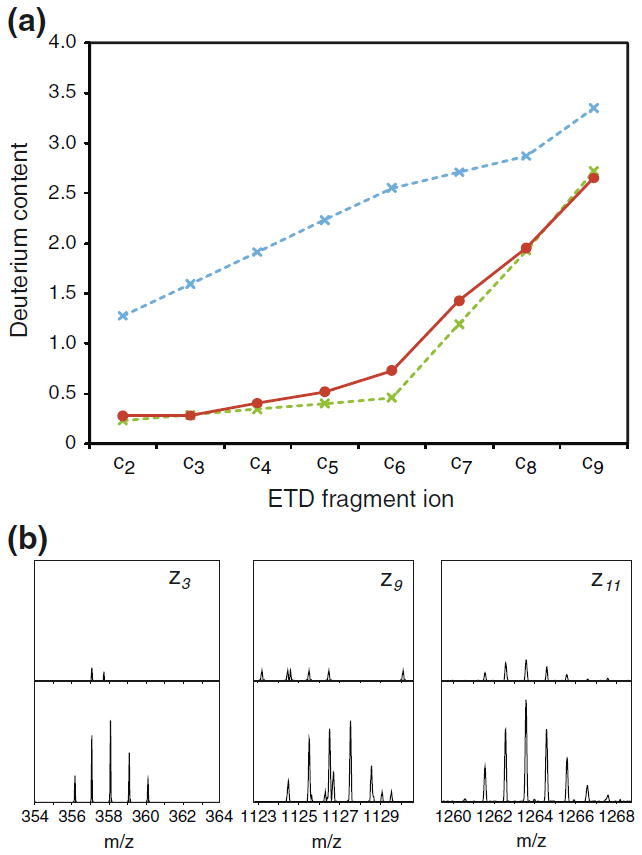Figure 5.

Supplemental activation of product ions of the ETD reaction in the T-wave occurs without detectable hydrogen scrambling. (a) The deuterium content of c-type fragment ions of the labeled triply protonated peptide P1 generated by ETD in the trap T-wave ion guide and subsequent supplemental activation (“CE”=10V) in the transfer T-wave ion guide. (b) Mass spectra of z-type fragment ions produced by ETD of labeled doubly protonated peptide P1 without supplemental activation (upper spectra) and with supplemental activation (“CE”=10V) (lower spectra). Increased dissociation of the “ETnoD” product by supplemental activation is apparent by an increase in the abundance (2- to 5-fold) of z-type fragment ions of the doubly protonated peptide (the intensity axis in upper mass spectra is scaled to fit the intensity axis of the lower mass spectra).
